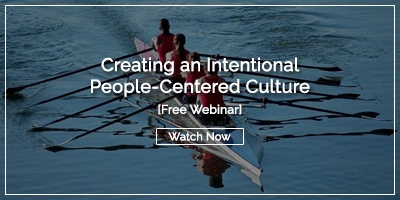 Across the globe, healthcare leaders are working hard to implement the principles of continuous improvement in their organizations. Continuous improvement is a systematic, repeatable approach to enhancing the quality of care and patients' health outcomes. Building a culture of continuous improvement is not a short-term project or a quick fix but a journey that never ends. It requires commitment, investment, and persistence.
Across the globe, healthcare leaders are working hard to implement the principles of continuous improvement in their organizations. Continuous improvement is a systematic, repeatable approach to enhancing the quality of care and patients' health outcomes. Building a culture of continuous improvement is not a short-term project or a quick fix but a journey that never ends. It requires commitment, investment, and persistence.
The goal of continuous improvement is operational excellence, which represents a way of working that delivers improvements in care quality and safety through the use of continuous improvement techniques. Improvement is owned and delivered by frontline staff and reinforced by ongoing training, technology, and supported by the entire organization.
A new management system
Continuous improvement replaces the traditional project-based thinking with behaviors, techniques, and tools that help managers support frontline staff to recognize and solve problems themselves. Improvement work is aligned with the organization's most critical strategic goals, otherwise known as "True North."
The changes needed in culture, attitudes, and actions don't always come easily. Skills like using and spreading problem-solving techniques must be learned and supported by mentoring and coaching. Supervisors need to develop the discipline to sustain this work over the long-run and understand that this new way of working and thinking is now the standard.
Leaders must commit to change themselves
Continuous improvement in healthcare requires senior leadership to understand it, support it, and demonstrate commitment. Leaders must role model the behaviors they expect, ask questions rather than handing down solutions, embrace problems as opportunities for improvement, and remove obstacles. They should be seen more in patient care areas.
Moving leadership behaviors from a traditional command-and-control, results-driven way of thinking isn't easy, and it takes time. Ideally, leadership is stable and committed over several years.
Slow down to speed up
Implementation of continuous improvement practices should not be rushed. Changing culture takes time, and it's worth getting right, especially in organizations that have seen many improvement initiatives come and go. Resistance to change, wrong notions about continuous improvement, and inadequate resources are a few of the crucial barriers to overcome.
Take the time to forge a plan and deliver training at a pace that makes sense. Work steadily to implement change, review progress, and adapt as required. This may very well mean a multi-year journey before all staff and departments are fully trained. Many healthcare organizations benefit from external expert support to advise on and deliver the initial implementation.
Develop a common improvement language
Introducing new ways of working can feel unsettling or even threatening to employees, so it is crucial to make substantial efforts to communicate with staff before implementing changes. The most enthusiastic staff members will quickly become champions and influencers for change among their peers with a thoughtful approach. Otherwise, low staff engagement will cause the program to stall or fail altogether.
Avoid "management-speak" terms that create misconceptions that improvement work really means cost-cutting and loss of autonomy. Many healthcare organizations have developed their own plain language around continuous improvement, empowering staff with terms that highlighted patients' benefits. This language then becomes the default for the organization, which encourages a sense of pride and cohesion.
A patient-focused, straightforward approach should anchor a more comprehensive communication strategy to build and sustain improvement momentum. Team members should meet regularly to discuss solutions to common problems so that lessons can be shared. Success stories and early wins can create the feeling that frontline staff are driving positive change and support the message that this is a new way of working, not just a temporary management fad.
Customize the training
In the end, continuous improvement depends on staff understanding and applying the new way of thinking and behaving. While simple in theory, the challenge of changing mindsets is often underestimated.
Active coaching, responsive to worker needs, can make all the difference. The coaching should mirror their pace and continue long enough to see change emerge. A few training sessions here and there will not deliver the transformation required.
Staff will engage differently depending on their role. Many organizations find that nurses are the first to understand and engage with continuous improvement methods. Their frontline roles put them in the perfect position to identify many improvement opportunities, while coaching helps empower them to implement changes. Doctors may be more challenging to engage due to conflicting priorities, heavy workloads, and change fatigue. Managers benefit from coaching to help them practice the new behaviors and create an environment where problems are seen as opportunities rather than a cause for blame.
Training should be tailored to anticipate the differences between roles, such as winning over doctors by focusing on the scientific approach to problem-solving and data-driven decisions.
Demonstrate impact quickly
Publicizing and celebrating early successes encourages staff and builds momentum by letting staff to say to colleagues 'this is working'. Broadcasting results is vital to help demonstrate a positive impact. Harnessing 'quick wins' is a powerful tool to accelerate change.
When you get started, process measures such as the number of employees trained and the number of improvement opportunities submitted can help show uptake and engagement. As implementation matures and improvements begin to accelerate, defining successes can shift to more outcome-focused measures such as safety improvement, wait times, patient satisfaction, and more.




Add a Comment